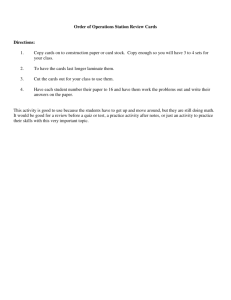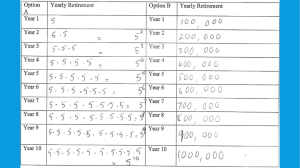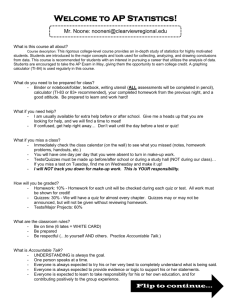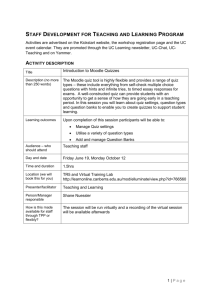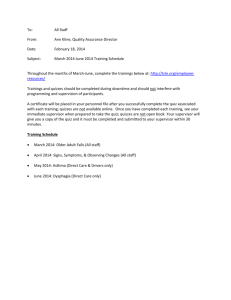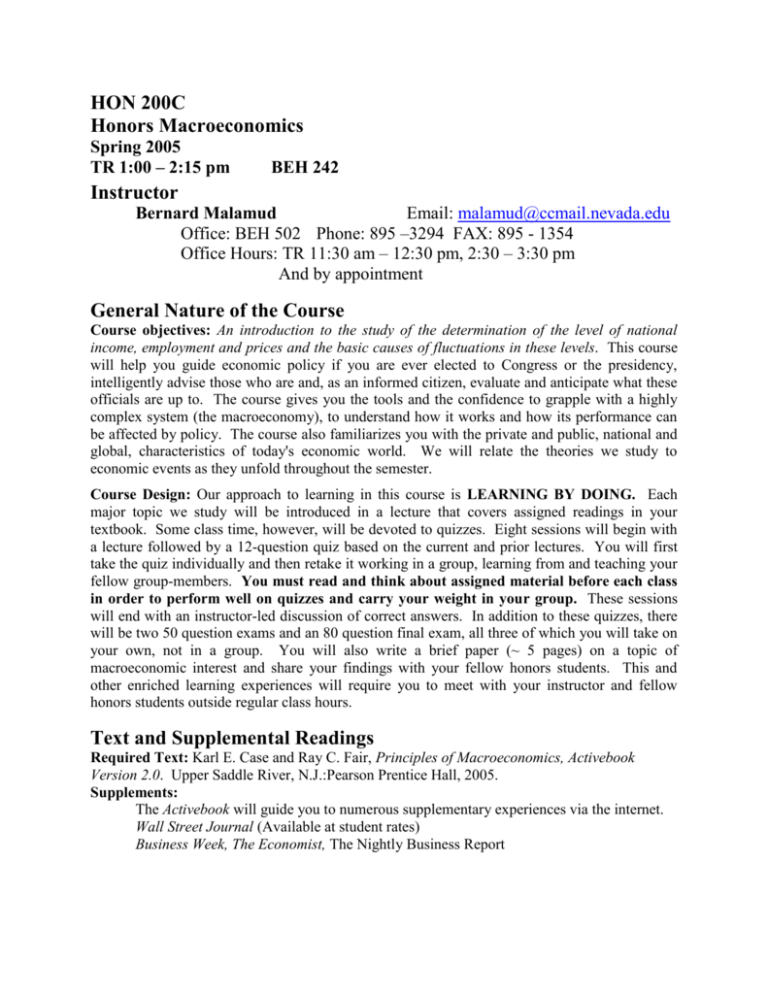
HON 200C
Honors Macroeconomics
Spring 2005
TR 1:00 – 2:15 pm
BEH 242
Instructor
Bernard Malamud
Email: malamud@ccmail.nevada.edu
Office: BEH 502 Phone: 895 –3294 FAX: 895 - 1354
Office Hours: TR 11:30 am – 12:30 pm, 2:30 – 3:30 pm
And by appointment
General Nature of the Course
Course objectives: An introduction to the study of the determination of the level of national
income, employment and prices and the basic causes of fluctuations in these levels. This course
will help you guide economic policy if you are ever elected to Congress or the presidency,
intelligently advise those who are and, as an informed citizen, evaluate and anticipate what these
officials are up to. The course gives you the tools and the confidence to grapple with a highly
complex system (the macroeconomy), to understand how it works and how its performance can
be affected by policy. The course also familiarizes you with the private and public, national and
global, characteristics of today's economic world. We will relate the theories we study to
economic events as they unfold throughout the semester.
Course Design: Our approach to learning in this course is LEARNING BY DOING. Each
major topic we study will be introduced in a lecture that covers assigned readings in your
textbook. Some class time, however, will be devoted to quizzes. Eight sessions will begin with
a lecture followed by a 12-question quiz based on the current and prior lectures. You will first
take the quiz individually and then retake it working in a group, learning from and teaching your
fellow group-members. You must read and think about assigned material before each class
in order to perform well on quizzes and carry your weight in your group. These sessions
will end with an instructor-led discussion of correct answers. In addition to these quizzes, there
will be two 50 question exams and an 80 question final exam, all three of which you will take on
your own, not in a group. You will also write a brief paper (~ 5 pages) on a topic of
macroeconomic interest and share your findings with your fellow honors students. This and
other enriched learning experiences will require you to meet with your instructor and fellow
honors students outside regular class hours.
Text and Supplemental Readings
Required Text: Karl E. Case and Ray C. Fair, Principles of Macroeconomics, Activebook
Version 2.0. Upper Saddle River, N.J.:Pearson Prentice Hall, 2005.
Supplements:
The Activebook will guide you to numerous supplementary experiences via the internet.
Wall Street Journal (Available at student rates)
Business Week, The Economist, The Nightly Business Report
Examinations and Grading
Eight individual and group quizzes, two classroom exams, and a comprehensive final exam
consisting of multiple choice and true/false questions will be given this semester. You must
bring a Scantron to each quiz and exam. In addition, your group must have an additional
Scantron for each quiz. Your will also write a brief paper on an important macroeconomic topic
and share your findings with your fellow honors students.
Your final grade will be based on your top six quiz scores, your scores on the classroom and
final exams, your score on your paper and presentation, and on your attendance. For each quiz,
your score will be computed as the average of the score you earn on your own and your group's
score. If you miss a quiz, your score will be zero. Group assignments made at the beginning of
the semester will balance your three-member group by major. Reassignments may be made at
mid-semester to account for withdrawals and absences: students who are consistently absent will
be grouped together.
Your overall percentage score will be based on your quiz, exam, and paper scores as follows:
Top 6 Quizzes
Paper Proposal Due February 15
Classroom Exam, March 1
Paper Draft, Due April 14
Classroom Exam, April 19
Paper Discussions Begin April 19
Paper, Final Version Due May 5
Final Exam, May 10
Maximum overall score
72 points
50 points
50 points
50 points
80 points
302 points
In addition, your overall percentage score will be adjusted for attendance by one-half percentage
point for every documented absence differing from three. Absences are “documented” by missed
quizzes and exams, by failure to pick up quizzes and exams when they are returned to you, and
by occasional attendance checks. The attendance adjusted percentage score on which your
final grade will be based is then
Your overall percentage score on quizzes, classroom exams, and final
+ ( ½ percentage point ) x ( 3 – Documented absences).
Note: fewer than three documented absences will increase this percentage, more than three
documented absences will decrease this percentage.
Approximate Final Grade Distribution
Attendance Adjusted
Percentage Score
87 percent
77 percent
67 percent
57 percent
FINAL GRADE
Borderline ABorderline BBorderline CBorderline D-
Attendance and class participation will affect your final grade.
Makeup Policy
Makeup exams may be arranged at mutual convenience if you have a compelling reason to miss
a scheduled classroom exam. A makeup exam must be taken before the missed exam is returned
to the class. There will be no makeup quizzes or final.
Class Conduct
Your instructor and classmates deserve courtesy. If you must arrive late or leave early, do so
quietly. Inform me beforehand if you must leave class early. Smoking and eating in class are
prohibited. Disruptive behavior in class constitutes grounds for dismissal from the course.
While this probably need not be said, anyone found engaging in any act of academic dishonesty
will be punished in accordance with university policies.
Other Information
If you have a documented disability that may require assistance, you will need to contact
Learning Enhancement Services for coordination of your academic accommodations. LES is
located in the Reynolds Student Services Complex in Room 137. The LES phone number is
895-0866.
Web Resources
The internet-based Case and Fair Activebook will guide you to multiple – choice study questions,
news summaries, and links to other economics sites. My own website will have additional notes
posted for you, including the powerpoint slides I use in lectures. Check it out at
www.unlv.edu/faculty/bmalamud and follow links to Spring 2005 classes, ECON 103. In
addition, you can always reach me with questions at malamud@ccmail.nevada.edu.
Suggested Paper Topics
There are numerous macroeconomic topics you can choose to study in depth and report in brief.
Whatever topic you choose, you must relate it to a theme covered in our course. A paper
proposal is due on February 15; a first draft of your report is due no later than April 14 (you
must be prepared to discuss your paper beginning April 19); the final version of your paper is
due May 5. You can submit and get feedback on as many drafts as you wish prior to May 5.
Appropriate topics include:
Macro Schools
Macro Laureates
Keynes and the Keynesians
Paul Samuelson
Robert Solow
Kalecki and Post-Keynesians
Milton Friedman
Franco Modigliani
The Monetarist Counter-Revolution
Simon Kuznets
Robert E. Lucus
The Rational-Expectations Revolution
James Meade
Joseph Stiglitz
Supply-Side Economics
James Tobin
Edward Prescott
Macro Episodes
Macro Issues
Gold Standard, 1870-1914
Social Security Reform
German Hyperinflation, 1920-23
The Dollar in the Dumps
The Great Depression, 1929-1939
Twin Deficits: Budget and Trade
The “Golden Age,” 1946-1971(?)
National Debt: What Me Worry?
Nixonomics, 1971-1973
Money After Greenspan
Stagflation, 1974-1980
Area Macroeconomics
The Volcker Disinflation, 1981-1987
Study the macropolicies and performance
Greenspan at the Fed, 1987-2005
of the country/region of your choice.
Course Outline
Date
Topics
Jan 18
Course organization and economic foundations
Jan 20,25,27 Economic Structure
Private Sector, International Sector, Public Sector
Jan 27: Quiz 1, Chapter 5
Feb 1-10
Feb 15
Macro Measures: Domestic and International
Output and Income, Nominal and Real Values, Price Indexes,
Exchange Rates, and Balance of Payments
Feb 10: Quiz 2, Chapters 6,21(part)
Readings in
Text
Chapter 5
Chapter 6
Ch 21(pp.341-5,
350-5)
Macro Distress
Unemployment, Inflation
Chapter 7
Feb17,22,24 Macro Equilibrium
Aggregate Demand, Aggregate Supply
Feb 24: Quiz 3, Chapters 7,13
Chapter 13
March 1
Classroom Examination, Chapters 5,6,21,7,13 50 points
Mar 3-15
Spending, Income, and Demand Side Equilibrium
Consumption, Saving, Investment and the Multiplier
Mar 15: Quiz 4, Chapters 8,9(part)
Chapter 8
Ch 9 (pp.139150)
March 17
Fiscal Policy
Spending, Taxing, Deficits, and Debt
Ch 9(pp.150-5;
also 318-9)
Mar 22,24
Spring Recess
Mar 29,31
Money
Functions/Flavors; Banking, Credit & Deposit Multiplier
Mar 31: Quiz 5, Chapters 9(part),10-11(parts)
Chapters 10,11
April 5,7
Monetary Policy
Central Banks, Their Tools, and Money Markets
Apr 7: Quiz 6, Chapters 10-11(parts)
Chapters 10,11
Macroeconomic Policy: Tradeoffs and Business Cycles
Phillips Curve(s), “Natural Rate”, Expectations and Outcomes
Apr 14: Quiz 7, Chapter 14
Chapter 14
Review Ch 13
April 12,14
April 19
Classroom Examination, Chapters 10 – 15, 50 points
April 21
Macro Viewpoints: New Keynesian, Monetarist, New Classical
Chapter 19
April 26
Economic Growth: Resources, Technology, Productivity
Chapter 18
April 28
Economic Development: Obstacles, Strategies, Transitions
Apr 28: Quiz 8, Chapters 18,19,23
Chapter 23
May 3
Globalization: Controversy, Progress, Retreat, Prospects
Chapter 22
May 5
Catch-up and Review
May 10
Comprehensive Final Examination, 80 points, 1:00 pm

